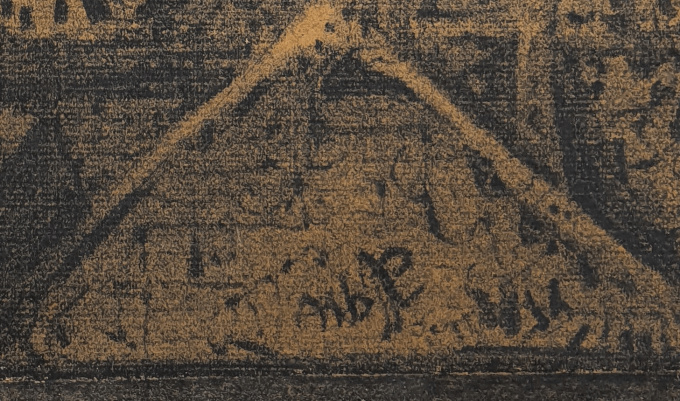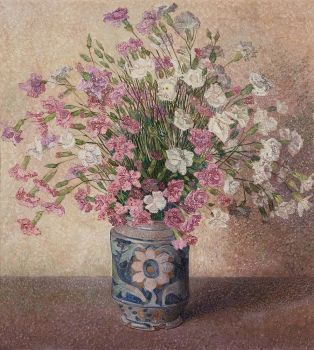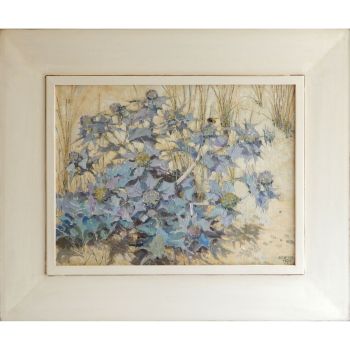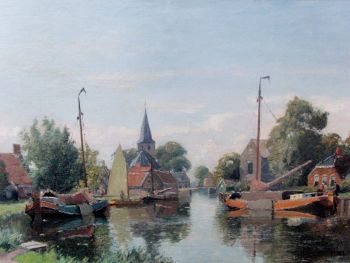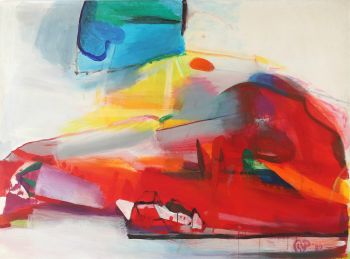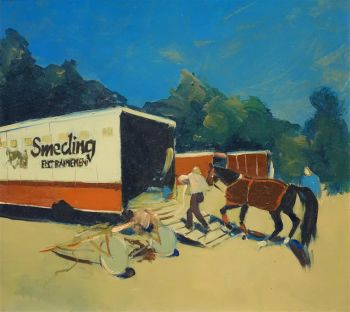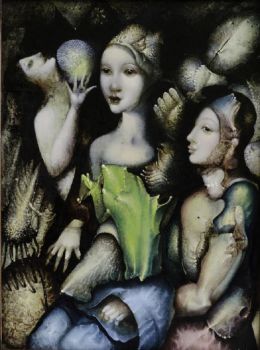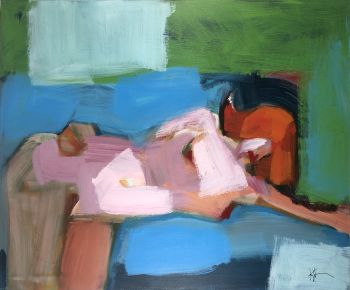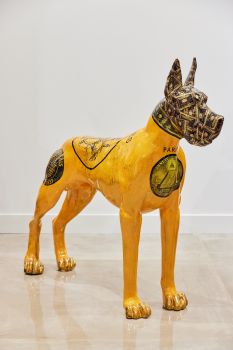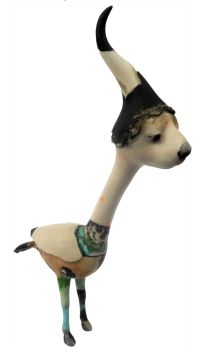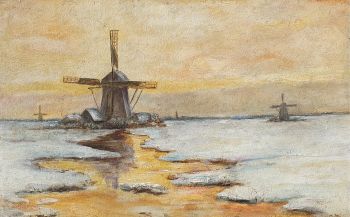Opus 3961 1930
Albert Auguste Plasschaert
Mixed media
48 ⨯ 33.50 cm
ConditionExcellent
€ 1.000
Klooster Fine Art
- About the artwork[EN]
The work, Opus 3961, was made on 11 February 1930 in Albert Plasschaert's idiosyncratic style. He used strong contour lines for the main figures, and created texture with nervous lines and markings.
In the main image, two women viewed in profile can be seen. The woman on the left looks up, possibly at the line drawing of a woman's head hovering above their heads. On the right, the woman has her eyes closed and head tilted down, apparently in contemplation.
On the lower margin he created a visual predella where he titled, signed and dated the work.
[NL]
Dit werk, Opus 3961, werd gemaakt op 11 februari 1930, in de stijl die kenmerkend is voor Albert Plasschaert. Hij gebruikte sterke contourlijnen voor de hoofdfiguren. Hij gaf het beeld textuur met een netwerk aan nerveuze lijnen en markeringen.
In de hoofdafbeelding zijn twee vrouwengezichten in profiel te zien. De vrouw links kijkt omhoog, mogelijk naar de lijntekening van een vrouwenhoofd dat boven hun hoofden zweeft. De rechtervrouw heeft haar ogen gesloten en het hoofd omlaag gekanteld – ogenschijnlijk in gedachten verzonken.
Aan de onderzijde maakte Plasschaert een visuele predella, waar hij het werk betitelde, signeerde en dateerde. - About the artist
Albert Charles Auguste Plasschaert, pseudonym A. Pelgrym, was a Dutch stained-glass artist, painter, art critic and poet. He was born in Sas van Gent on 20 April in 1874, he died in The Hague on 9 May 1941. Plasschaert went to the Polytechnic School in Delft and he also studied law at the Leiden University for a while. During his student years, he was the director of the literary and art magazine De Tuin. He turned out to be one of the most formidable art critics of the Netherlands. He published his criticisms in the newspapers Het Vaderland and in De Groene Amsterdammer. He also wrote for magazines like The Art, The Voice and the New Guide. Among his prestigious commissions were the stained glass window designs for the Royal Dutch Glass Factory J.J.B.J. Bouvy in Dordrecht. He was buried at the General Cemetery in his hometown of Rijswijk.
Are you interested in buying this artwork?
Artwork details
Related artworks
- 1 - 1 / 1
 Com curadoria de
Com curadoria deDanny Bree
 Com curadoria de
Com curadoria deDanny Bree
1 - 4 / 24Marcel Jefferys
Jeune femme au collier dans un intérieur1890 - 1922
Preço em pedidoStudio 2000 Art Gallery
 Com curadoria de
Com curadoria deGallerease Magazine
1 - 4 / 24- 1 - 4 / 24
- 1 - 4 / 24
- 1 - 4 / 12




